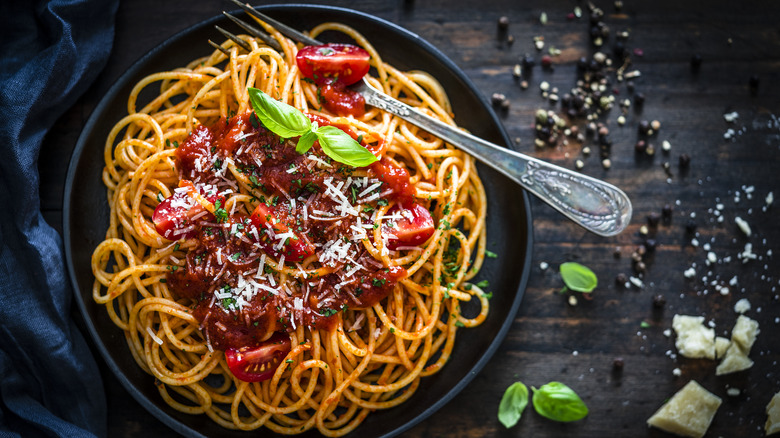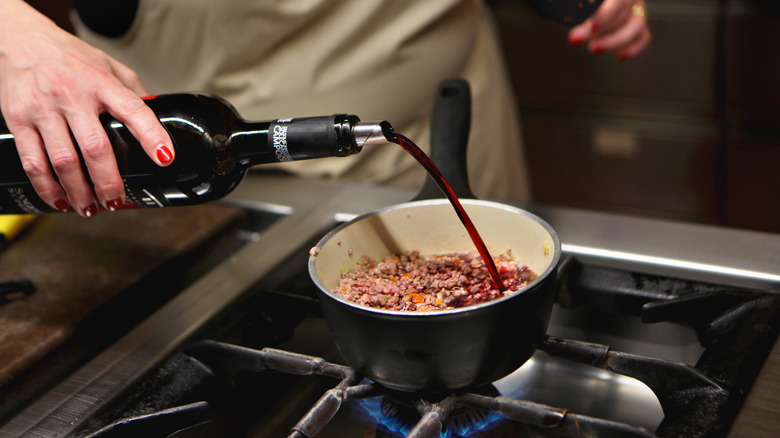Instead Of Sauce, Try Using Red Wine For Your Next Pasta Night
When thinking of pasta sauce, what likely comes to mind is the smooth finish of a tomato sauce, marinara sauce, or even a meaty blend such as bolognese. Pasta sauce expands to include many other delectable varieties, though. For example, pasta lovers might enjoy funghi e piselli made with mushrooms, garlic, and peas, or an amatriciana sauce, which requires Italian guanciale pork and San Marzano tomatoes. White iterations include the thick cream-based alfredo sauce and the ever-popular cacio e pepe with cheese and black pepper.
Along those lines, many types of pasta sauce tap into the essence of red or white wine. We're not just talking about the perfect wine with some of the best pasta dishes in the US but incorporating wine directly into the sauce. It's a commonplace practice in certain sauces, such as using white wine in amatriciana sauce or red wine in a French bordelaise sauce. If you're wondering why wine even belongs in pasta sauce, it's because it helps enhance the sauce's flavor molecules as well as breaking down fat to release those flavors.
But what about axing the "sauce" part and just using red wine in the pasta? In other words, substituting red wine for the sauce, without leaning on any tomatoes. It may sound like a peculiar faddish idea, but it's a real thing that answers to several names, including red wine spaghetti.
Drunken spaghetti and more wine-soaked pasta
Red wine spaghetti may sound like a low-brow dish but don't underestimate the concept. Versions of the concept go by fancier or more colorful names such as agnolotti al vino and spaghetti all'ubriaco, also known as drunken spaghetti. They all have one thing in common; red wine is the pivotal component. Some are enhanced by ingredients that can elevate pasta. Which ingredients you use depends on the recipe but common choices include garlic, olive oil, butter, red pepper flakes, parsley, oregano, butter, or a beef bouillon cube in place of the butter. No tomatoes are anywhere in sight with these recipes, though.
In a nutshell, these ingredients come together along with lots of red wine. The goal is to reduce the wine throughout 20 to 25 minutes then mix the pasta in. As for the taste, you'll notice the wine, which yields flavors so good you might just eat the whole thing before transferring it to a plate. Aesthetics-wise, the dish is also known for its deep purple colors. It's a far cry from the bright red sauce to which many people are accustomed.
Another way to enjoy wine-soaked pasta is to cook the pasta separately in red wine instead of boiling water or to use half wine and half water. Acidic components in the wine subtly improve the pasta texture while infusing it with loads of flavor. You also get some aromatic leftover wine water for making a tasty and compatible pasta sauce.

